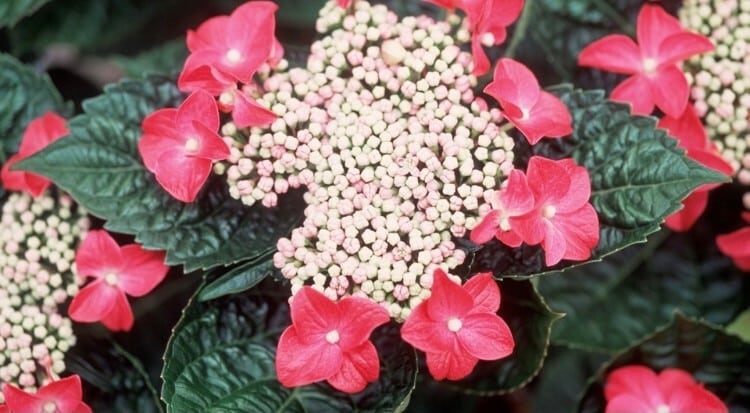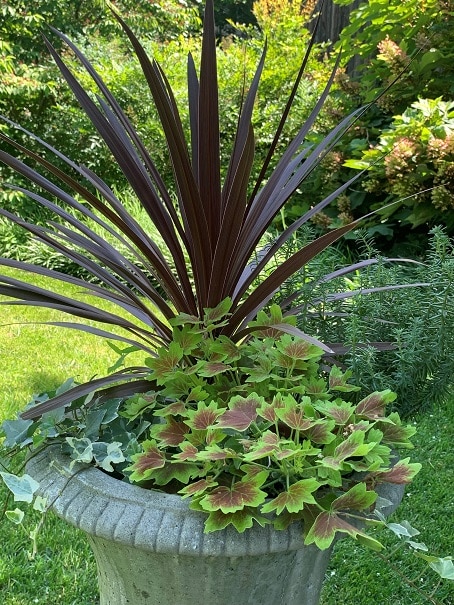Our guest blogger Barry from Delaware, US, shares his thoughts about gardening during hot summer,
enjoy!
When It’s Too Hot to Garden
Relax and Write About Gardening
August is the perfect time to step back to reflect upon our gardening successes and lessons learned – and to plan for the perfect gardens we’ll have next year.

August is the February of summer. Just as short days and cold weather keep gardeners indoors during winter’s low point, insufferable humidity and scorching sun limit this month’s gardening hours to the hours between dawn and 10:00 am, After which time the wisest thing to do is find cool refuge in our garden’s shady spots or seek out a place to swim.
That’s why August is the perfect time to start a garden journal – or return to one we may have already started. It’s summer, so our hearts and minds are fully turned to our gardens. But, it’s also soul-crushingly hot and humid. Our bodies can scarcely stand more than a couple of hours in them.
A garden journal, like Gardenize, gives you the opportunity to muss and fuss over your garden, but you can do it while comfortably sitting poolside or under the shade-giving branches of a large tree. By now we know what worked well in our gardens and we have learned the bitter truth about how painfully wrong we were about “perfect” plant combinations or the locations we picked for new shrubs. We can revel in what went right so we can remember to do it again next year. And we can write down what went wrong, so we don’t make the same mistake twice. Or, if you’re like me, for the fifth year in a row.
Here are a few of the lessons learned from my August garden journal entries.
Three strikes and you’re out, Lady in Red Hydrangeas.
Several years ago, I bought a dozen Lady in Red Hydrangeas (Hydrangea macrophylla ‘Lady in Red’, USDA Hardiness Zones 6 – 9). The reviews for these plants were raves and I just knew I had the perfect partially shaded location the plants desired, until the trees nearby grew and the location became fully shaded and the hydrangeas, which really were lovely for a while, stopped blooming.
So, I moved all twelve of the shrubs to my front garde. which proved to be too sunny, and the ladies wilted and swooned. So, this year, I moved the plants once again to what I hope will be the perfect partially shaded location at the rear of my property. If this location doesn’t work, I’m done with these picky ladies. I give plants (and myself) three chances to get things right.

Much like our waistlines over time, shade in our gardens can increase without us noticing
I have several planters on the steps that lead from my patio to a deck in my backyard. When I first planted the pots several years ago, they were in full sun and the plants I chose were sun lovers, which put on quite a good show of flowers. So, every year since then, I have mindlessly replanted the same general combination of plants that brought me so much joy that first year.
This year, however, I realized that the plants are hardly blooming and the sunny spot in which the planters have long stood is now shrouded in shade. I somehow missed the way the next-door neighbor’s sycamore tree had grown and blocked out the sun. The lesson here: we need to treat our gardens the same way we treat wardrobes. Every year, when we pull out the stuff our gardens wore last year, we need to make sure they still fit. Next year: impatiens!
Casa Blanca lilies need space. And light.
I bought a bunch of Casa Blanca lily bulbs several years ago to tuck into a bed of ferns that runs next to my driveway. It was one of those rare design ideas that ended up looking as good as I had hoped. The lilies threaded themselves up through the swath of ferns and the flowers hovered above them, their clean white flowers looking pristine and gorgeous against the green background. And the fragrance was fantastic. The pollen stains I kept getting all over my clothes, though, were less pleasing. So, I moved the bulbs safely away from my driveway into my front garden and tucked them between the aforementioned Lady in Red hydrangeas.
Unfortunately, because the hydrangeas were taller than the ferns that had previously accompanied them, the lilies had to lean forward to find the sunlight necessary to flower. By the time the buds opened, the plants were tilted at a 45-degree angle and the blooms were aimed at the lawn. The only option was to harvest the whole crop and turn it into an enormous bouquet — which was nice, but not my reason for growing them. The lilies are going to have to find a new casa…
Black Scallop Ajuga is not good between stepping stones.
I had seen photos of the beautiful dark burgundy-black glossy leaves of Black Scallop Ajuga (Ajuga reptans ‘Black Scallop’, USDA Hardiness Zones 4-10) online and in catalogs, where I was assured that the groundcover was perfect to plant between stepping stones, so I bought a flat and planted them in my front walk. This was a mistake. The leaves of this particular cultivar of the popular groundcover are more upright than others and the leaves are thicker and fleshier. In fact, they’re so thick and fleshy, they squeak.
Folks attempting to walk on my front path seemed to intuit these facts the moment they arrived at my house. So, instead of walking confidently and comfortably up to my walk, people nervously picked their way along, jumping from safe place to safe place as if they were playing a game of “hot lava” on a pre-school playground. So, this fall, when it’s cool enough to move things, the ajuga is moving to the beds where the lilies used to lean.

Celebrate and remember your victories!
I have a planter, a concrete urn, placed as an off-center focal point in my backyard. Its main purpose is to anchor three second-hand garden chairs I purchased. These chairs are normally sold in groups of four, but one went missing somewhere along the way — hence their low price and my odd threesome. The planter was also supposed to add some height and color to the arrangement. For several years I experimented with various combinations of plants in the urn, following the time-honored container garden prescription of thrillers, fillers and spillers, but no combination ever satisfied me.
The various spike-shaped plants intended to anchor the arrangement never really lived up to their thriller role. The fillers filled the pot, but they left my soul empty. And, driven by my love of chartreuse foliage, I kept using sweet potato vines (Ipomea batatas ‘Margarita’, annual, perennial in Zone 11) as spillers. These quickly smothered the planter and turned the whole arrangement into an enormous, shapeless, green blob. This year I reigned the whole thing in, didn’t worry about finding dazzling color combinations, and replaced the rampaging potato vine with a demure variegated ivy. And, by golly, it worked! No. it’s not a show-stopper. It doesn’t scream for attention or “stop the eye” (as designers like to say). But, it gets the job done.

The repeat of the burgundy from the sword-shaped leaves of Red Star Dracaena (Cordyline australis ‘Red Star’ USDA Hardiness Zone 10-11 ) in the leaves of geranium Vancouver Centennial Geranium (Pelargonium ‘Vancouver Centennial’ USDA Hardiness Zone 10-11) and the silver that shows up in the ivy (Hedera helix ‘Variegata’, USDA Hardiness Zones 4-10) and lavender cotton (Santolina chamaecyparissus, USDA Hardiness Zones 6 – 9) make me happy and a little proud at my accidental success whenever I pass by and see how well the colors and textures are working together. And no rampaging plant has erupted out of the pot to consume it.
So, give it a try. For folks with a literary flair, writing about gardening, plants, and flowers offers opportunities to stretch your vocabulary. Where else in your writing life can you use words as beautiful as panicle, raceme, and calyx? And for gardeners who are feeling temporarily defeated by heat, humidity, drought, and mildew (which, I suspect, is just about everyone), stepping back and dreaming about next year or next season is a nice break. After all, more than the beauty or nutritiousness of the plants we grow, or the satisfying feel of soil in our hands, we gardeners garden for the sheer thrill of its unrepentant optimism.
KEEP YOUR GARDEN NOTES IN GARDENIZE, GARDEN JOURNAL
By continously adding your garden photos and notes in Gardenize, you will always have an up to date garden journal. With Gardenize Plus, you can add as many photos as you want and it is a perfect way to track the development of both specific plants, and different garden areas.
You can download Gardenize from the App Store or Google Play, or log in to the web.
You can find more information on our website Gardenize.com.


ABOUT THE AUTHOR
Barry Goodinson is an amateur gardener who tends to his Zone 7 garden in southern Delaware on the Atlantic coast of the United States. He has spent his career working with non-governmental organizations focusing on issues such as homelessness, HIV/AIDS, urban green space improvement, and historic preservation. He has an undergraduate degree in philosophy, a master’s degree in public policy, and a certificate in landscape design.
